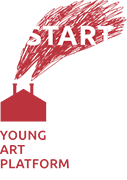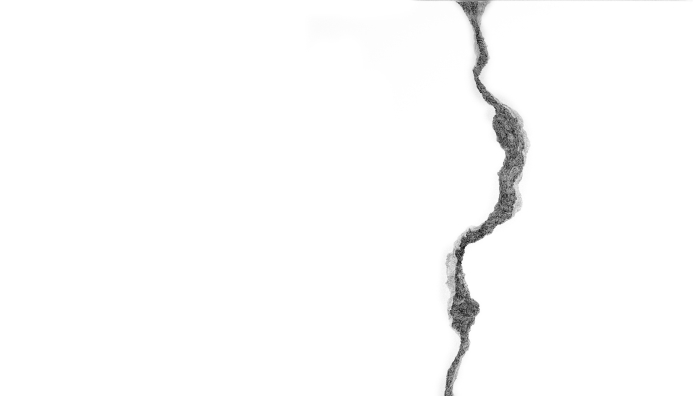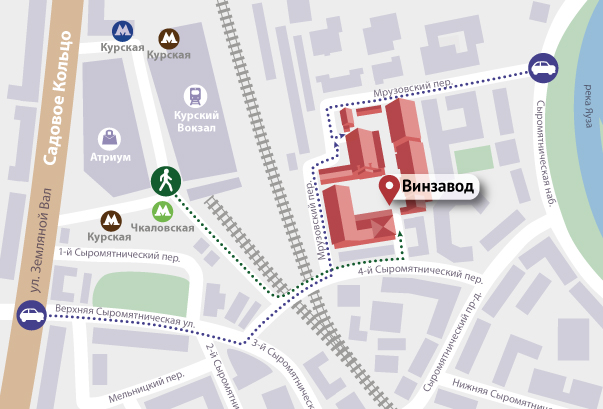The Center of contemporary art WINERY opens a new exhibition season at the site of the young art START with the show "Ust-Tsilma"of Ustina Yakovleva. The Program Start 2010 is presented by a young artist and curator Arseny Zhilyaev:«, The inaugural exhibition of the artist shows a series of abstract landscapes, a canvas «River» of 12 meters long, as well as several works with symbols of the people from the Russian North. For the last year, Yakovleva has become a prominent figure in the Moscow unofficial art scene, having participated in major apartment exhibitions. The unique creative manner of the artist is based on a combination of traditional ornaments of the Russian North, the real and imaginary Northern landscapes (historic homeland of the artist) and a dry graphic language of the conceptual art of the last century«
At the exhibition opening on June 10 there will be a poetic performance «Fast Muskrat». The legend of the fast muskrat is about the young girls who escaped from a technocratic civilization and horrors of the urban life in the forest. Promoting a revolution of colors and slicing samples of the music tracks of the 60s, they sing songs about life of animals, love of stones and death of hedgehogs , the revolutionaries lost in empty forest houses.
UST-TSILMA
Think globally, act locally.
R. Vanegaim
The founder of psychogeography, a mad ParisianIvan Shcheglov believed that it was possible to build a house where it would be impossible not to fall in love. Let those houses exist only in our imagination, that’s enough to start. «We are all looking for the North-West passage it does not deny a magical power of those insights — a magic door to the other worlds» he said. Today a passionate insight of Shcheglov, who finished his life in a madhouse, looks like a romantic feeling about what a real life is. Perhaps from the very beginning that was it but it does not deny a magic power of those insights.
The Art of Ustina Yakovleva is like a revelation of the child living in a digital temple. «Alice meets Saul Levit,» Frenchmen would say. The obsessive repetitive lines form an imaginary landscape. The artist offers a game of associations. It seems that we see an imagery of the melting Antarctic ice from Google. Or it could be the dried up river bed. Or clouds. Or a coded message of the binary coordinate system. 24000 lines of 5mm wide. A cold conceptual language of a little girl she uses to show the dreams of her past life.
«My mother was born in Ust-Tsilma. That means in the mouth of the river Tsilma, in the North,» says Ustina. The river of 12 meters long of feelings in a binary opposition of black and white, long and short, empty and full. A digital automatic writing. Under the asphalt of the modern world there is another world of the inner Mongolia, but to feel it you need to see in cracks the traces of the past lives.
A heiress of the ornamental art which was pushed down by the modern art to the periphery Yakovleva goes beyond her military predecessors from the 70s. The rhetoric of the feminist struggle is transformed rather into a research interest in the nature of a visual image and the laws according to which it is formed today. If a romantic spirit of Levit was manifested in the attempt to find failures in the hyperstructured space, Yakovleva is on the opposite direction. She tries to structure the elusive mental experiences, whether it’s memories about the relationship between man and space, or a clean stream of emotions. So, on her canvases there are points of meeting of the limited calculations and the infinity of a pulsing life, the coldness of expressive means and the expression of body rhythm, the personal story and the questioning about the essence of art.






Arseniy Zhilyaev
The art of Ustina Yakovleva is like a revelation of the child living in a digital temple. " Alice meets Saul Levitt," Frenchmen would say. The obsessive repetitive lines are formed in the imaginary landscape. The artist invites the viewer to play in associations.
For press